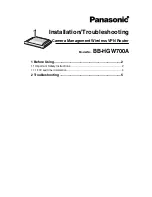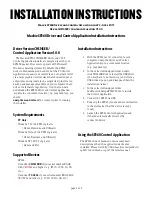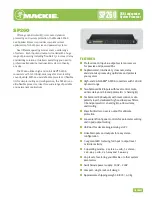
Appliance Configuration
Check Point 1400 Appliances Centrally Managed Administration Guide R77.20.85 | 95
Additional Information for Attributes
Attribute
Description
DHCP relay Use internal IP
addresses as
source
Select
Use internal IP addresses as source
if DHCP relay
packets from the appliance will originate from internal IP
addresses. This may be required if the DHCP server is located
behind a remote VPN site.
Hotspot
Enable portal
Select
Disabled
to disable the hotspot feature entirely.
Serial port Enable serial
port
Flow control
Mode
Port speed
With the serial port parameters you can configure the console
port on the back panel of the appliance.
You can disable it completely (clear the
Enable serial port
checkbox) if necessary and configure
port speed
and
flow
control
settings. Note that these settings must match the
configuration of the device connected to the console port.
There are three modes for working with this port:
Console
- This is the default mode configured. The port is used
to access the appliance's console.
Active
- Instead of connecting through the port to the appliance's
console, the data is relayed to a specified telnet server which can
now be viewed through this port. Enter the
Server TCP port
of
the telnet server and the IP address of the server. Two different
IP server IP addresses can be configured (
Primary server
and
Secondary server
).
Passive
- In this mode the flow of data is reversed and the
appliance connects through the serial port to the console of the
connected device. This console will be accessible through a
telnet connection to a configured port on the appliance. In
Listen
on TPC port
, enter the port number.
You must manually define an access rule in the Firewall Rule
Base in SmartDashboard.
Two appliances, one in active mode and the other in passive
mode, can allow a client to remotely connect to a console
connected to the appliance in passive mode over the internet
using a telnet connection.
Summary of Contents for L-71
Page 122: ......
















































